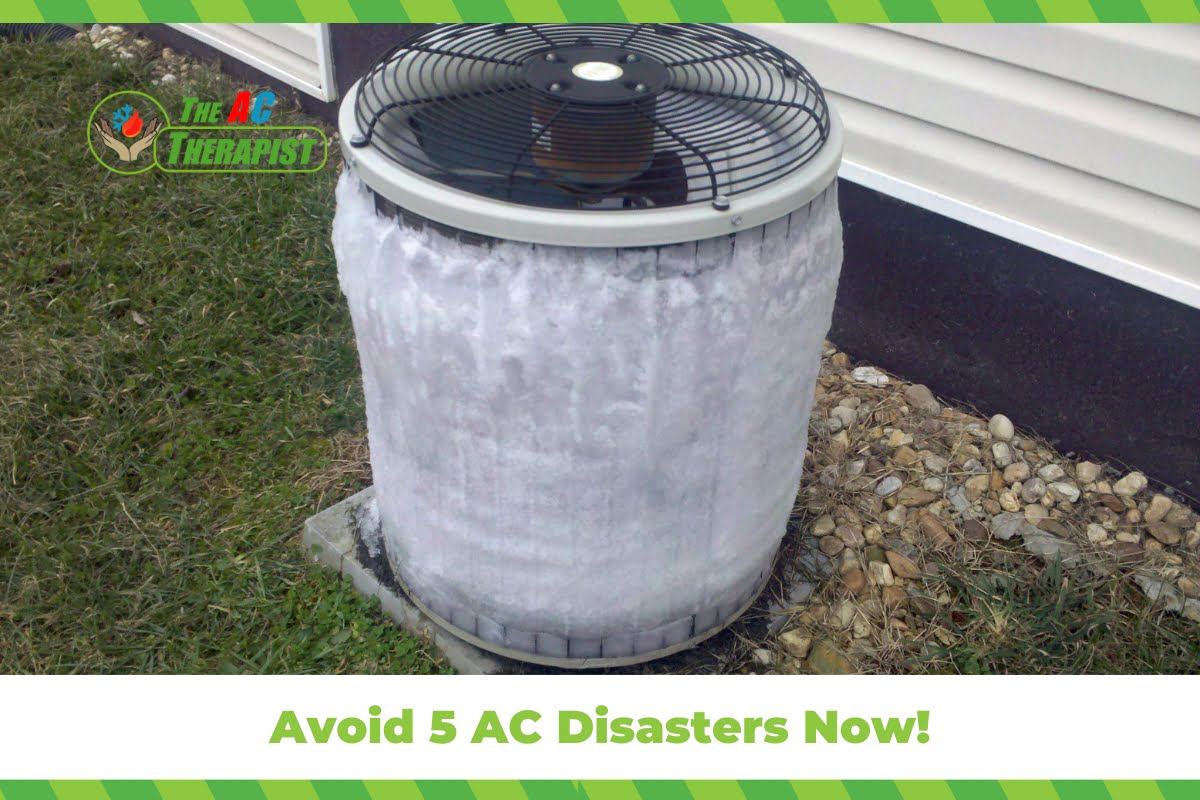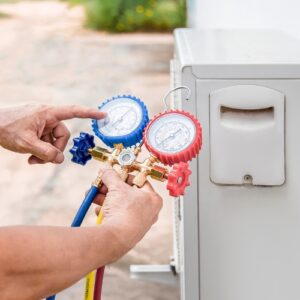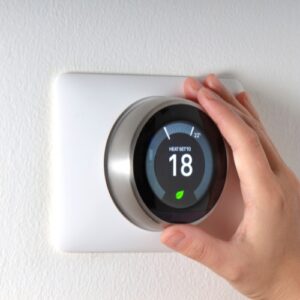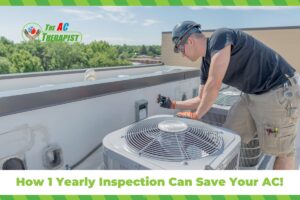Avoid 5 AC Disasters Now!
In the sweltering heat of summer or the unexpected warm spells in cooler months, your air conditioning system serves as the backbone of your home’s comfort. Yet, despite its crucial role, the health of our AC systems is often taken for granted, only gaining attention when a breakdown disrupts our lives. The inconvenience, discomfort, and cost of emergency repairs can turn any day into a nightmare. Fortunately, most air conditioning disasters are preventable with the right knowledge and a proactive approach.
This blog will serve as your comprehensive guide to understanding the inner workings of your AC unit and the practical steps you can take to prevent potential disasters. From simple routine maintenance to recognizing early signs of trouble, we’ll cover essential strategies that can extend the life of your system, enhance its performance, and save you from the heat-induced frustration of a malfunctioning unit. Whether you’re a new homeowner or a seasoned property manager, these insights will empower you to take control of your air conditioning maintenance, ensuring that your living space remains cool and comfortable, no matter the weather outside.
Join us as we delve into the world of AC maintenance, where a little knowledge and some regular upkeep can spare you significant expenses and ensure your home’s air conditioning is a source of relief, not stress.
Understanding Your AC System
Before diving into maintenance tips and disaster prevention techniques, it’s crucial to have a basic understanding of how your air conditioning system works. This knowledge not only helps you better maintain the unit but also empowers you to communicate effectively with professionals when the need arises.
Key Components of an Air Conditioning System
- Compressor: Often referred to as the “heart” of the air conditioning system, the compressor’s job is to compress the refrigerant, which carries the heat out of your house. It is located in the outdoor unit and plays a critical role in the cooling process.
- Condenser Coil: This is also located in the outdoor unit. The compressed refrigerant flows through the condenser coil where it releases the heat it has absorbed from the indoor air.
- Expansion Valve: Situated between the indoor and outdoor units, the expansion valve controls the flow of refrigerant into the evaporator coil. It adjusts the amount of refrigerant based on the cooling demands of your system.
- Evaporator Coil: Located in the indoor unit, the evaporator coil absorbs heat from the air inside your home. As warm air passes over the cold coils, the refrigerant inside the coils absorbs the heat, cooling down the air.
- Air Handler and Blower: The air handler houses the evaporator coil and the blower. It circulates air throughout your home’s ductwork. The blower moves the air over the evaporator coil to be cooled and then pushes it through the ducts.
- Thermostat: This is the control system for your AC. It detects the temperature in your home and tells your AC when to turn on and off based on the temperature settings you choose.
Types of AC Systems
- Central Air Conditioning: This is the most common type in homes and uses a network of ducts to distribute cool air efficiently throughout the property.
- Ductless Mini-Split Systems: These are great for homes without ductwork. They consist of an outdoor compressor unit and one or more indoor air handling units, connected by a conduit.
- Window Units: These are compact and are installed in windows. They’re suitable for cooling single rooms.
- Portable Air Conditioners: These are freestanding units that can be moved from room to room and are typically vented through a window.
5 Common AC Disasters
- Compressor Failure: The compressor is the heart of the air conditioning system, and the circulating refrigerant is necessary for heat exchange. Overworking due to clogged air filters, low refrigerant levels, or poor heat exchange can cause the compressor to overheat and fail—a costly disaster.
- Refrigerant Leaks: Refrigerant is essential for cooling your home, but leaks can occur due to vibrations, wear and tear on service valves, or corrosion of the refrigerant lines. A leak not only reduces efficiency, causing your system to work harder and increasing energy costs, but it can also lead to environmental harm and necessitate expensive repairs.
- Frozen Evaporator Coils: When there’s insufficient airflow, your system’s evaporator coils can freeze, stopping the AC from effectively cooling the air. This can happen due to dirty filters, blocked ducts, or low refrigerant levels. A frozen coil can cause the system to become inoperative or lead to water damage when the ice melts.
- Electrical Failures: Electrical issues such as faulty wiring, short circuits, or a malfunctioning thermostat can lead to erratic behavior and complete system shutdown. Regular inspections are vital to prevent these kinds of AC disasters, which can be dangerous and lead to other electrical hazards in your home.
- Drainage Problems: The AC unit’s condensate drain line can become clogged with algae, dirt, or debris, leading to water backup and potentially serious water damage to your home. Regular cleaning of the drain line is essential to prevent this type of AC disaster.
Regular Maintenance is Key
Maintaining your air conditioning system is crucial for ensuring it runs efficiently and lasts as long as possible. Regular maintenance not only helps prevent unexpected breakdowns and costly repairs but also ensures your system operates at peak efficiency, saving you money on energy bills and enhancing indoor air quality. Here are some essential maintenance tasks that every homeowner should perform:
1. Change or Clean Air Filters Regularly
One of the simplest, yet most effective, maintenance tasks is changing the air filters. Dirty air filters restrict airflow, causing the system to work harder, which can lead to overheating and even system failure. Depending on your system type, usage, and indoor air quality, you should replace or clean air filters every 30 to 90 days. If you have pets or live in a dusty area, consider checking and changing the filters more frequently.
2. Schedule Seasonal Inspections
An annual or semi-annual professional inspection is vital. During these inspections, a qualified technician will check your system’s components, including the compressor, evaporator unit, and all associated valves and filters to ensure they are operating correctly. They’ll also check the refrigerant levels and test the system’s controls and thermostats. These regular check-ups can catch issues before they turn into major problems.
3. Keep the Area Around Your Unit Clear
The outdoor unit of your AC system needs adequate airflow to function efficiently. Keep at least a 2-foot clearance around it, free from leaves, dirt, and debris. During the fall, ensure that falling leaves do not clog or obstruct the unit. Also, trim any plants or shrubs that might block airflow.
4. Ensure Proper Drainage
The condensate drain line can become clogged with algae, mold, or even mineral deposits. This can cause water to back up into your home or the AC unit, leading to moisture issues and reduced performance. Regularly check the drain line for clogs and clear it to ensure proper drainage.
5. Inspect Ductwork for Leaks
Leaky ducts can significantly reduce your system’s efficiency by up to 20%. They allow cool air to escape, forcing your AC to work harder and longer to maintain the desired temperature. Use your hand to feel for air leaks or hire a professional to perform a test and seal any leaks.
6. Check Insulation on Refrigerant Lines
The lines that run from the indoor unit to the outdoor unit should be properly insulated to maintain efficiency. Inspect these lines regularly to ensure the insulation is intact and free from damage.
7. Review and Adjust Thermostat Settings
A properly set thermostat can reduce the workload on your AC while maintaining comfort. Consider upgrading to a smart thermostat that automatically adjusts temperatures based on your daily patterns and can be controlled remotely for enhanced convenience and efficiency.
DIY Preventative Measures
Regular DIY maintenance can play a significant role in extending the lifespan of your air conditioning system and preventing potential disasters. Here are some effective, manageable steps you can take to keep your AC running smoothly:
1. Clean or Replace Air Filters
This is one of the simplest yet most effective preventative measures. A clean air filter ensures optimal airflow, keeping your system efficient and reducing strain on its components. Check your filters monthly and replace or clean them as needed, especially during high-use seasons.
2. Keep the Condenser Unit Free of Debris
The outdoor condenser unit is crucial for efficient air conditioning. Ensure that it is free of debris, such as leaves, dirt, and grass clippings. These can block the airflow and reduce the unit’s ability to expel heat, stressing the system and lowering efficiency. Gently clean the fan blades and condenser fins with a garden hose, but be careful not to bend the delicate fins.
3. Check and Clean the Condensate Drain Line
The condensate drain line can become clogged with algae and mold, leading to overflow and water damage. To clean it, locate the drain line near the indoor cooling coil, typically mounted above the furnace in the basement. You can flush the line with a mixture of water and vinegar, or mild detergent to keep it clear.
4. Inspect Insulation on Refrigerant Lines
The refrigerant lines that run from the indoor unit to the outdoor unit should be well-insulated to maintain efficiency. Check these lines periodically for signs of wear or damage, and replace the insulation if necessary.
5. Keep Indoor Vents Unblocked
Ensure that furniture or other household items are not blocking the air vents in your home. Proper airflow is crucial for efficient operation and maintaining even temperatures throughout your living space.
6. Use a Programmable Thermostat
A programmable thermostat can help reduce the workload on your AC by adjusting the temperature throughout the day based on your schedule, which can extend the life of your system and reduce energy costs. Set it to run less when you are away from home and cool down just before you return.
7. Check Electrical Connections
It’s important to ensure that all electrical connections are tight and that there is no sign of overheating or wear on wires. You can check the electrical connections (if you are comfortable and knowledgeable about electrical safety), or have them inspected during your annual HVAC service.
8. Perform Seasonal System Tests
Before the peak of the cooling season begins, turn on your system to check for any issues that might have developed during the off-season. Listen for abnormal noises, check for unusual odors, and make sure the air coming from the vents is cool.
Advanced Tips and Tricks to Prevent AC Disasters
To ensure your air conditioning system avoids any AC disasters, it’s important to not only keep up with regular maintenance but also to implement advanced strategies. These tips will help you further enhance the reliability and efficiency of your AC unit, significantly reducing the risk of potential AC disasters. Let’s dive into some of these advanced techniques:
1. Upgrade to a Smart Thermostat
Smart thermostats are excellent tools for preventing AC disasters. They adjust the cooling based on your patterns and can be controlled remotely, which prevents unnecessary strain on your AC system. By maintaining optimal temperatures and usage patterns, smart thermostats help avoid the common triggers of AC disasters.
2. Enhance Home Insulation
Proper insulation in your home is critical for preventing AC disasters by ensuring that cool air stays inside during the summer. Check your attic, walls, and floors for adequate insulation. Sealing cracks and openings can prevent warm air infiltration, which often leads to AC disasters by forcing the system to work harder than necessary.
3. Install a Zoned Cooling System
A zoned cooling system allows you to control temperatures in different areas of your home independently. This not only improves comfort but also prevents AC disasters by reducing the burden on your AC system, allowing it to operate more efficiently and with less risk of malfunction.
4. Regularly Clean Ductwork
Neglected ductwork can lead to significant AC disasters. Dust and debris in the ducts can obstruct airflow, strain your system, and degrade indoor air quality. Scheduling professional duct cleaning periodically ensures your AC system operates efficiently and is less prone to disasters.
5. Consider a Condenser Shade
Placing a shade over your outdoor condenser unit can prevent AC disasters by keeping the unit cooler, thus improving its efficiency. Ensure that the shade structure does not restrict airflow around the condenser; a minimum clearance of 24 inches is recommended to avoid potential AC disasters.
6. Use Ceiling Fans to Assist Cooling
Ceiling fans help circulate air throughout your rooms, which can take some of the burdens off your AC system. This practice helps to prevent AC disasters by distributing the cooled air more evenly and allowing you to set a higher thermostat setting without reducing comfort.
7. Invest in Regular Electrical System Checks
Faulty wiring and poor electrical connections can lead to AC disasters. Having a professional inspect your AC’s electrical systems annually can prevent unexpected failures. Ensuring all connections are secure and up to code can significantly reduce the likelihood of AC disasters.
8. Monitor Refrigerant Levels
Low or leaking refrigerant is a common cause of AC disasters. It not only affects the efficiency of your AC system but can also lead to compressor failure, which is often a costly repair. Having your refrigerant levels checked by a professional annually can prevent such AC disasters.
Preparing for the Off-Season: Safeguarding Against AC Disasters
As the cooling season winds down, preparing your air conditioning system for the off-season is crucial to prevent AC disasters when you least expect them. Proper off-season care can help extend the life of your AC unit, ensure it’s ready to operate efficiently when needed, and importantly, prevent AC disasters that can occur from neglect during the colder months. Here are essential steps to take:
1. Clean and Inspect the Entire System
Before shutting down your AC for the season, a thorough cleaning and inspection can prevent AC disasters. Remove any debris and dirt from the outdoor unit, clean the condenser coils, and replace the air filters. Inspect for any signs of wear or damage that could turn into potential AC disasters if left unaddressed.
2. Cover the Outdoor Unit
Covering your outdoor unit can prevent AC disasters by protecting it from harsh winter weather, debris, and animals. Use a breathable cover designed for AC units; this will keep the unit dry and prevent moisture buildup, which can lead to AC disasters like rust and electrical issues.
3. Check and Seal Ducts
Ensure that all air ducts are sealed and insulated properly before the off-season. Unsealed or poorly insulated ducts can lead to inefficiencies and potential AC disasters when the system is turned back on. This maintenance check can prevent AC disasters stemming from lost energy and overworked equipment.
4. Drain Line Maintenance
Clear the condensate drain line to prevent water buildup and freezing, which can cause significant AC disasters. A clogged drain line can lead to water damage and affect indoor air quality, contributing to potential AC disasters when the system is restarted.
5. Thermostat Settings
Adjust your thermostat settings for the off-season. Setting it to a lower temperature or turning it off completely can prevent unnecessary cycling of the AC, reducing the risk of AC disasters due to overuse or stress on the system during months of non-use.
6. Professional Inspection
Consider scheduling a professional inspection to end the season. A certified technician can identify any issues that might lead to AC disasters. They can perform necessary repairs and provide expert advice on protecting your system during the off-season.
7. Review and Plan Upgrades
The off-season is the perfect time to plan for any upgrades or replacements before potential AC disasters occur. Upgrading your system or parts of it during the off-season can prevent the urgency and inconvenience of dealing with AC disasters during the heat of the summer.
8. Educate Yourself on Emergency Protocols
Knowing what to do in case of an unexpected AC disaster can save you time and minimize damage. Familiarize yourself with the main shut-off switches and emergency service numbers. This knowledge is crucial in quickly addressing any issues that could lead to major AC disasters.
The AC Therapist’s Guide: How to Prevent AC Disasters Before They Strike
As your trusted AC Therapist, I’ve seen firsthand how neglect and poor maintenance can lead to costly AC disasters. The tips we’ve discussed today are not just recommendations; they’re essential practices that I use to safeguard the air conditioning systems of homes and businesses throughout Tampa Bay. Remember, preventing AC disasters doesn’t just save you from unexpected breakdowns—it also enhances the efficiency and longevity of your system, ensuring you stay cool and comfortable no matter the season.
From regular maintenance checks to advanced preventative strategies, each step is crucial in the battle against AC disasters. Don’t wait for the system to show signs of trouble; proactive care is key. If you ever feel overwhelmed or need professional help, remember that I’m just a call away. Together, we can ensure that AC disasters are a thing of the past, and you can enjoy a peaceful, cool environment in your home or office. Stay cool, stay comfortable, and let’s keep those AC disasters at bay with The AC Therapist by your side!












